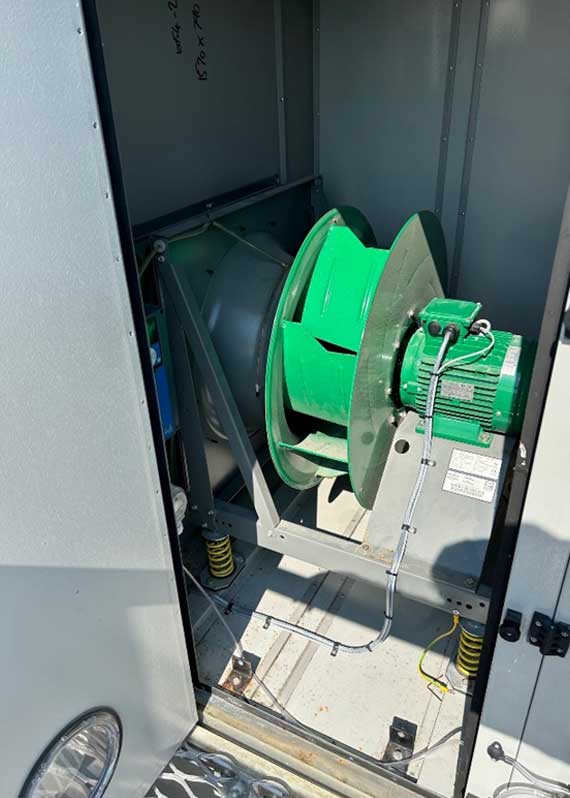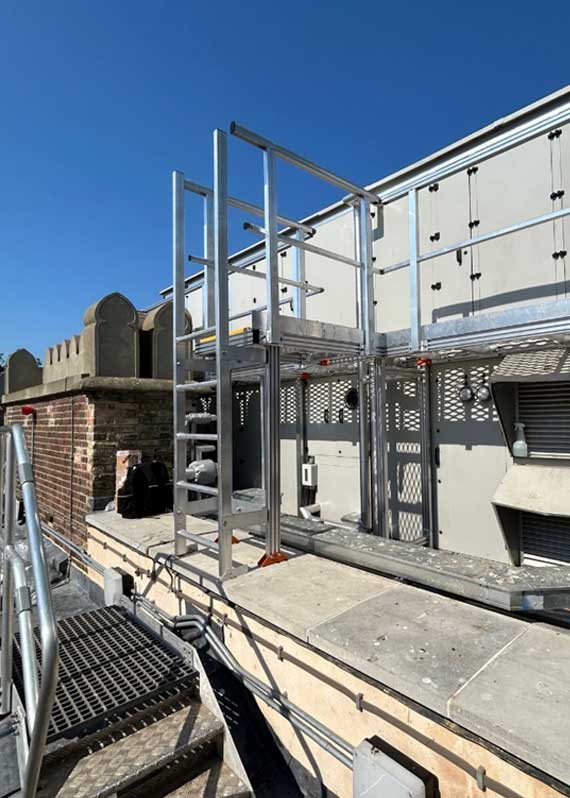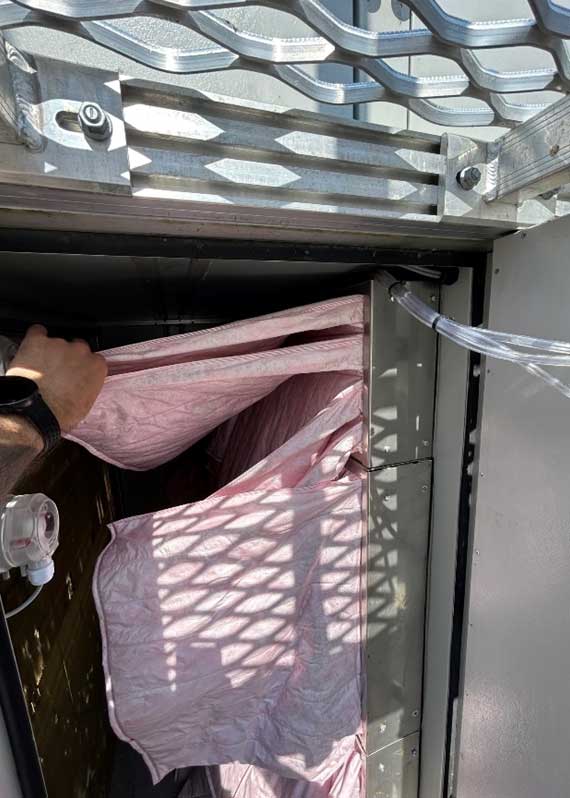Project Description
Objective: To conduct AHU inspection (Air Handling Units) following a previous pre-commissioning visit.
Background
The AHUs in question had been inactive for nearly six years and, to the best of our knowledge, had not undergone any maintenance during this time. Our engineers were provided with the original AHU specifications, as well as an arrangement diagram for the site, to guide our AHU inspection.
Our team conducted a thorough review of each AHU, splitting the inspection into two sections per unit: Supply and Extract. We focused on identifying any potential issues that could affect performance, safety, or future maintenance needs.
Key Findings
AHU 1 – Top Deck
- No guard on the fan section: This presents a safety concern.
- Surface corrosion in various sections: Indicates long-term neglect and environmental exposure.
- Dirt build-up in multiple sections: Requires cleaning to improve efficiency.
- Corroded twist locks: Some rivnuts are spinning, making removal impossible.
AHU 1 – Bottom Deck
- No guard on the fan section: Safety hazard.
- Fan running in reverse: This causes a lack of airflow, which must be rectified.
- Incomplete duct transformation piece: This compromises air handling and system efficiency.
- Incorrect orientation of bag filters: The bags are running horizontally instead of vertically, which reduces efficiency.
- Dirt build-up and corrosion: Cleaning required for all affected sections.
AHU 2 – Top Deck
- Incorrect filter installation: Both the bag filters and panel filters are installed incorrectly and need to be rotated 90 degrees.
- Missing twist locks: The rivnut is corroded, preventing proper installation.
- No local external isolator: This poses a potential issue for isolating the unit for safety and maintenance.
- Fan section unguarded: This is a safety concern that needs addressing.
- Large gap between sections in the fan plenum: This causes significant air leakage and must be fixed to ensure system performance.
AHU 2 – Bottom Deck
- Panel filters installed incorrectly: Filters need to be repositioned for optimal airflow.
- Corrosion: This indicates the need for further attention to prevent deterioration.
- Dirt build-up: Cleaning required to improve performance.
AHU 3
- No guard on the fan section: Safety risk.
- Fan not running in auto mode: The fan will only run in hand mode, which affects system functionality and energy efficiency.
AHU 4
- No guard on the fan section: Safety concern.
- Incorrect panel filters: Horizontal panels are installed instead of vertical ones, which is not suitable for this system.
Overall Assessment
Although the units were operational at the time of our visit, several issues were identified that could affect their long-term efficiency, safety, and functionality.
Inverter Placement: All inverters were mounted internally within the fan sections. This setup prevents remote monitoring or adjustment of the inverter settings, which means engineers must enter the fan section while it is running to make adjustments. We recommend installing external inverter keypads to allow for safe, remote control.
Air Leaks: On AHU 2, a 10-15mm gap was found between two section joints, leading to significant air leakage. This needs to be rectified by either realigning the sections or installing a plate to seal the gap.
Safety Concerns: The lack of guards around the fan sections, coupled with exposed inverters next to unguarded edges, creates a safety risk. It is recommended that these areas be safeguarded to prevent accidents.
Ductwork Issue on AHU 1: A missing piece of ductwork in AHU 1 was noted, where the discharge is directed through the floor into the building. Once the fan is running correctly, this may lead to air leakage around the base of the unit.
Recommendations
The AHUs need a thorough clean to remove accumulated dirt and address corrosion. This will ensure that the units operate at optimal efficiency. The fan running in reverse must be fixed, and the filters should be correctly oriented. The wrong filters should be replaced with the appropriate ones for proper installation. Install the guards on the fan sections and relocate the inverter to an external, accessible location to eliminate the need for engineers to enter a running fan section. Address the air leakage issue on AHU 2 by sealing the gap between the sections. Complete the missing ductwork on AHU 1 to prevent air leakage.
Conclusion
This inspection highlighted several areas of concern that need to be addressed to ensure the AHUs function efficiently and safely. While the units are now operational, it is essential to carry out the recommended maintenance after the AHU inspection to prolong their lifespan and improve system performance.

The fan is now wired correctly and fully functional

The fan guard had not been fitted

The Bag filter pockets should be vertical and this section was full of dirt and needed to be cleaned
